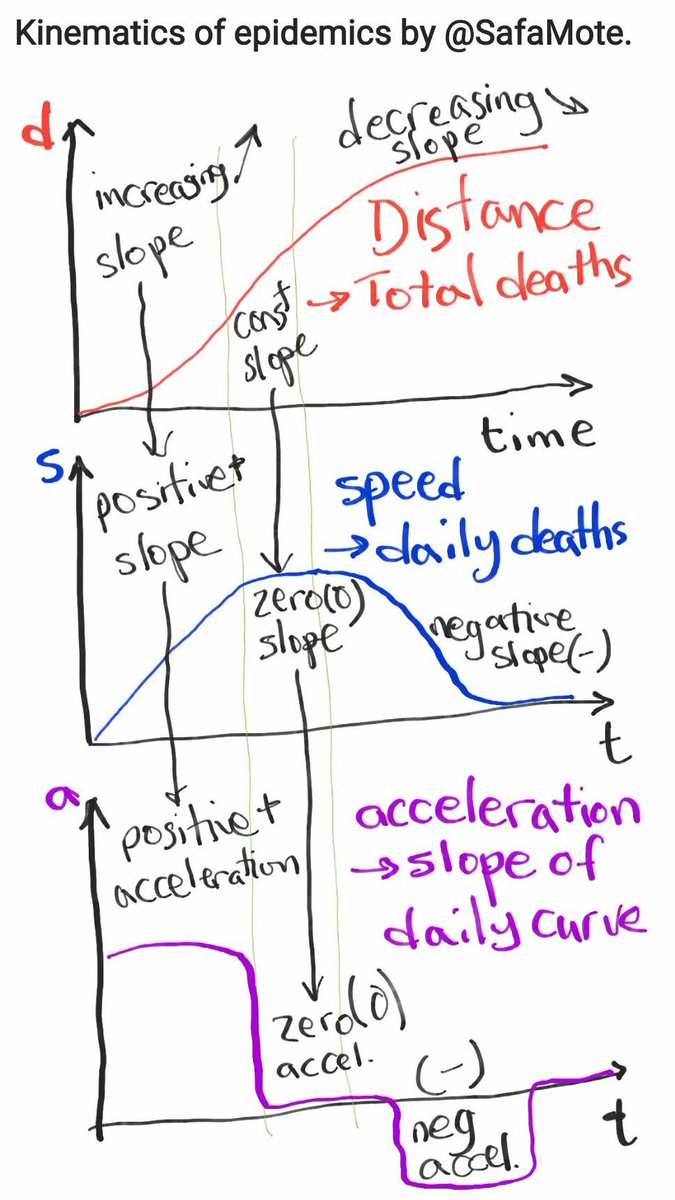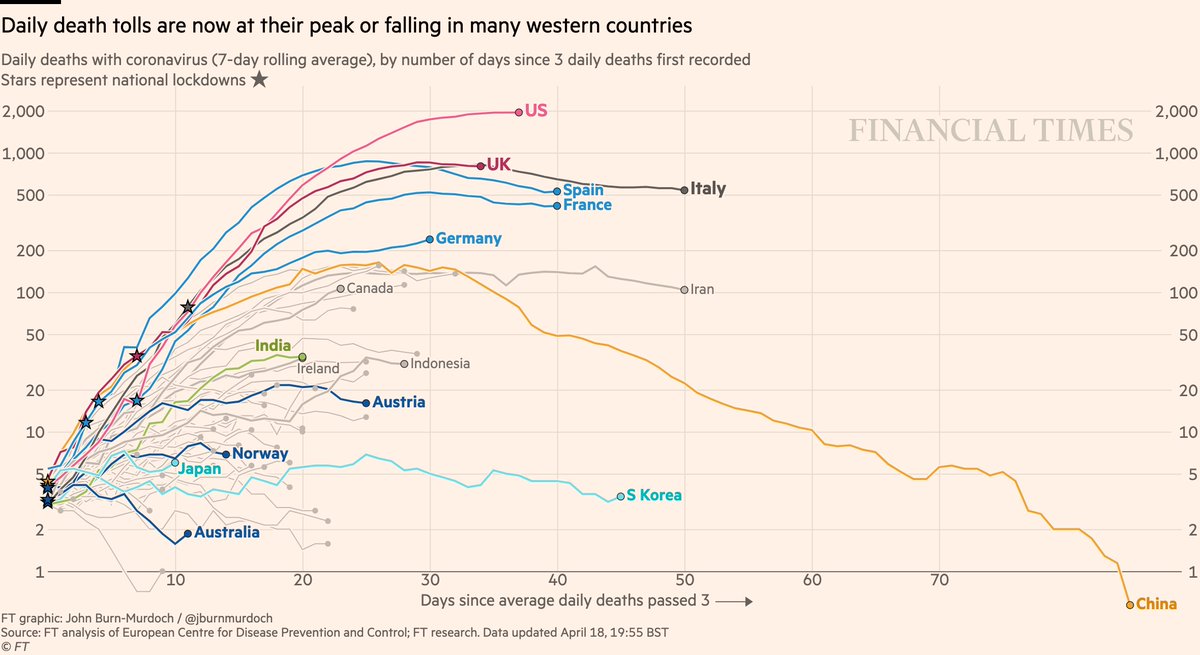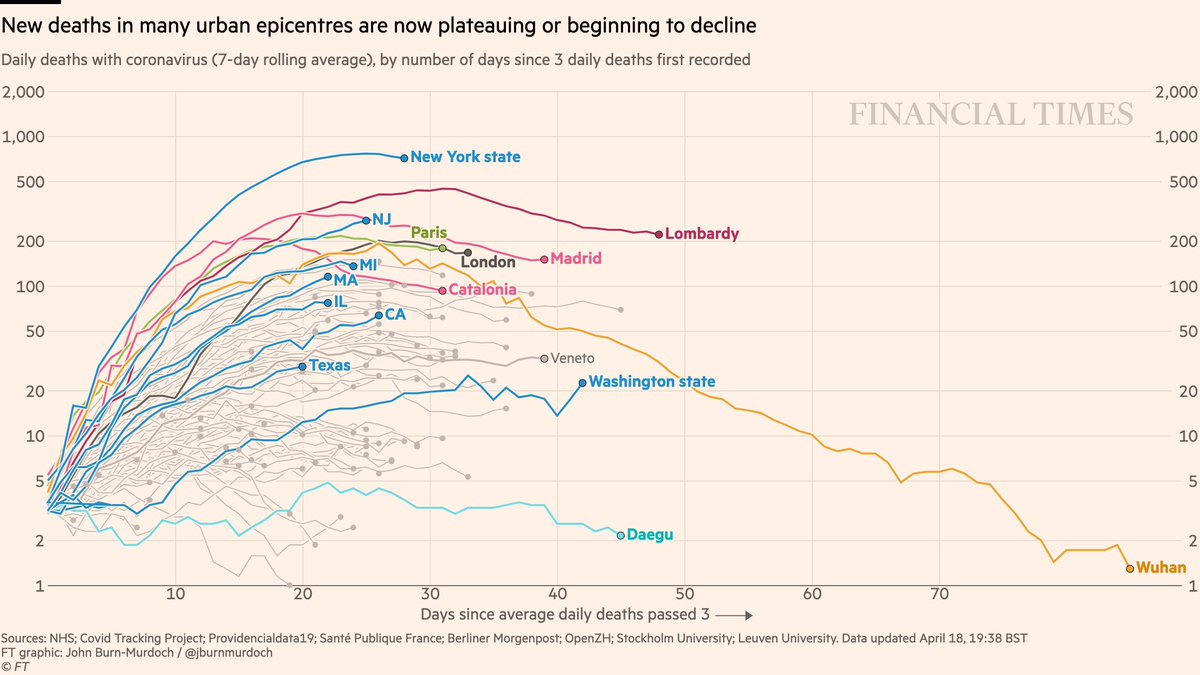On Apr 4, I made a spot-on prediction for US #COVID deaths by Apr 12 (~20k).
My prediction on Apr 12 for today, Apr 19, was ~35–40k deaths.
It proved accurate AGAIN. Sadly.
1/
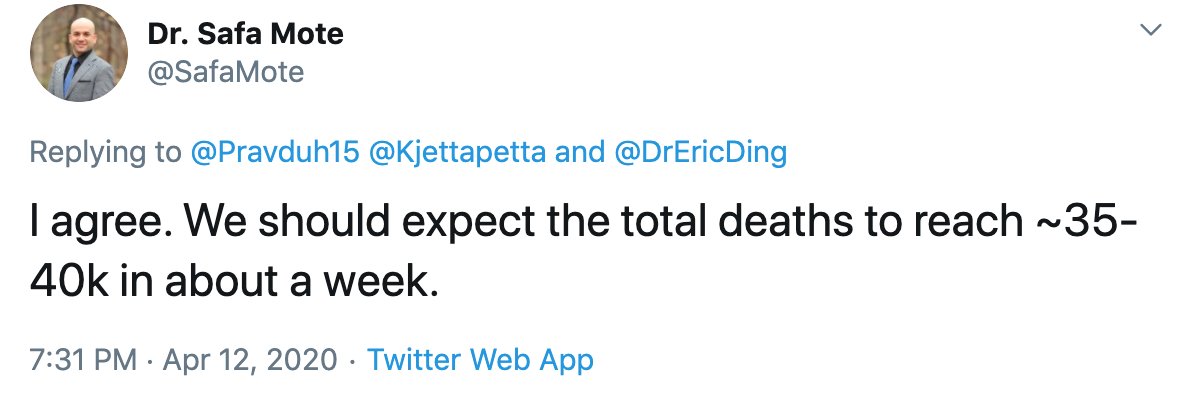
The first subject area that is taught in Physics is Classical Mechanics. It was also historically the first area of Physics, mainly developed by Galileo (1564–1642) and Newton (1642–1727).
3/
walking, running, football, baseball, car, airplane, spacecraft, satellites, moon, Earth.
4/
& Quantum Mechanics describes motion of microscopic particles, e.g., atoms, electrons.
5/
Kinematics studies the motion itself, without considering its causes.
Dynamics studies the causes of motion.
Newton's 2nd law of motion, often expressed as F=ma (Force= mass × acceleration), is a law of dynamics.
6/
7/
Velocity is the rate of change of distance, and acceleration is the rate of change of velocity.
8/
Graphs by C.R. Nave in the link below nicely summarize kinematics.
hyperphysics.phy-astr.gsu.edu/hbase/Mechanic…
9/
Deaths are generally more accurately counted than cases, even though large uncertainties still remain for deaths.
11/
In calculus, this is called an integral (sum), equivalent to the area under the curve.
12/
13/
37.5 +/- 2.5k = 35–40k.
That estimate was again spot-on. Although today's count is on the high side of this range, ~39k deaths.
17/
In particular, the deceleration rate that was reported in #Wuhan has not been observed anywhere else.
21/
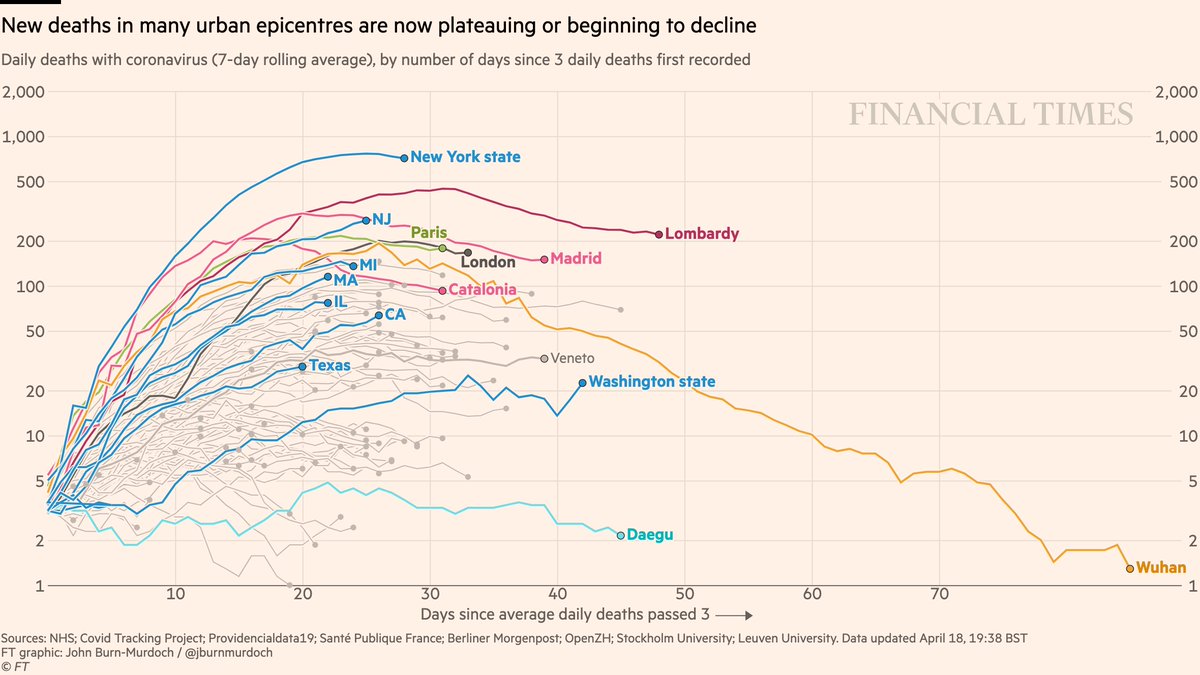
Rushed reopening can cause a return to acceleration (upward slope). And since we will be starting at larger daily values, the second peak could become much larger than the first peak.
22/
Figure from Markel et al., 2007. “Nonpharmaceutical Interventions Implemented by US Cities During the 1918–1919 Influenza Pandemic.” JAMA 298 (6): 644–54.
doi.org/10.1001/jama.2….
23/
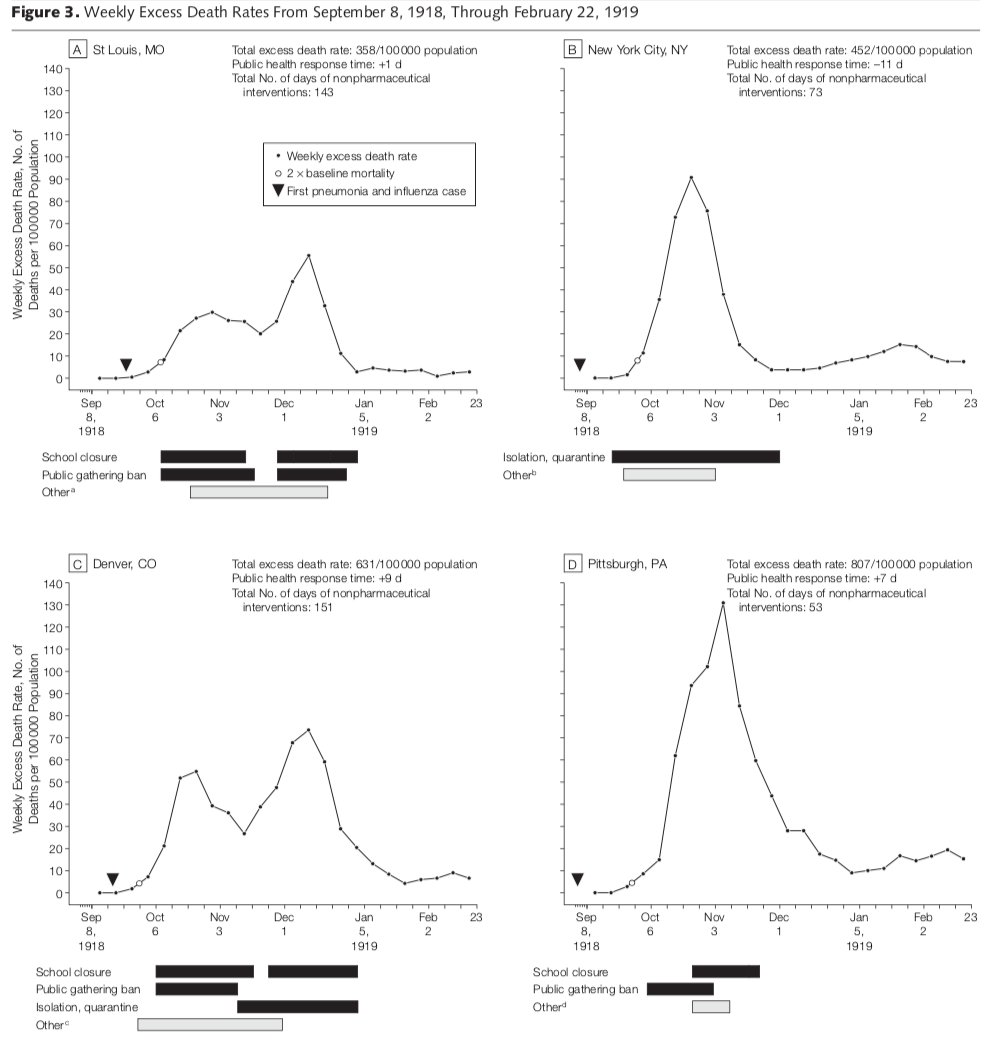
Deceleration is substantial in #NewZealand, #Australia, #Norway, #Austria; moderate in #Germany, #Spain, #France; small in #Italy;
Almost no deceleration in the US & UK.
24/
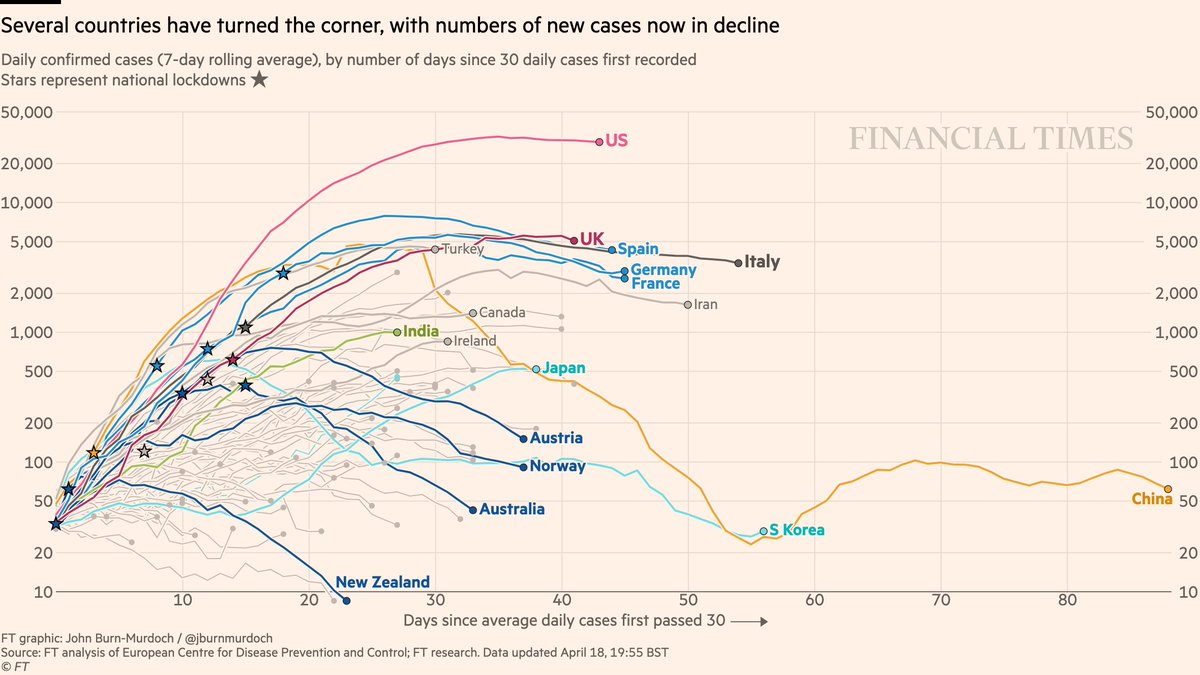
We will need to continue lockdowns until we see a substantial decline in these swollen curves.
25/
26/
27/
28/
A big thanks to @FT and @jburnmurdoch for making their excellent plots freely available.
29/
/end

